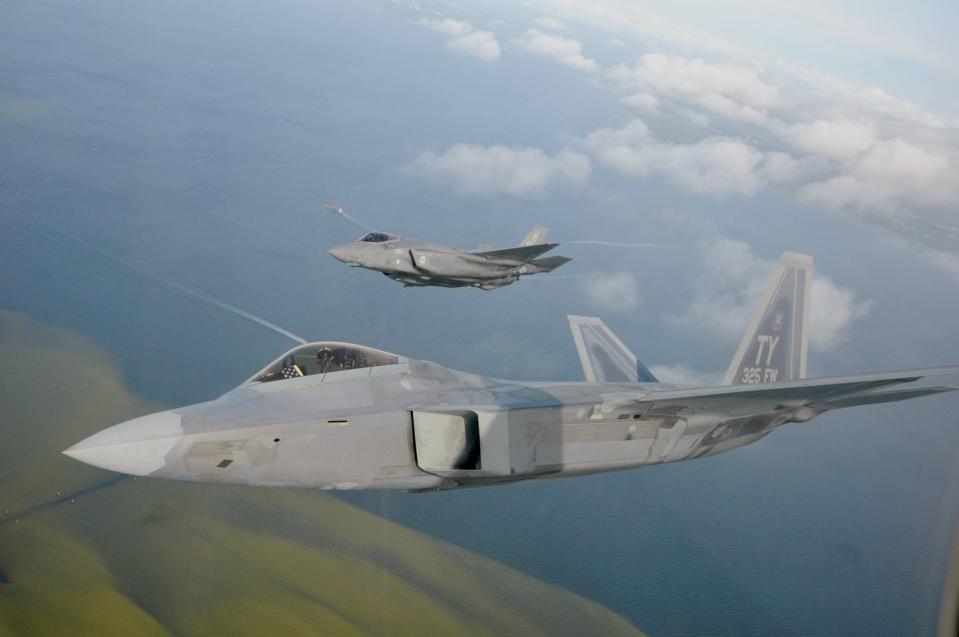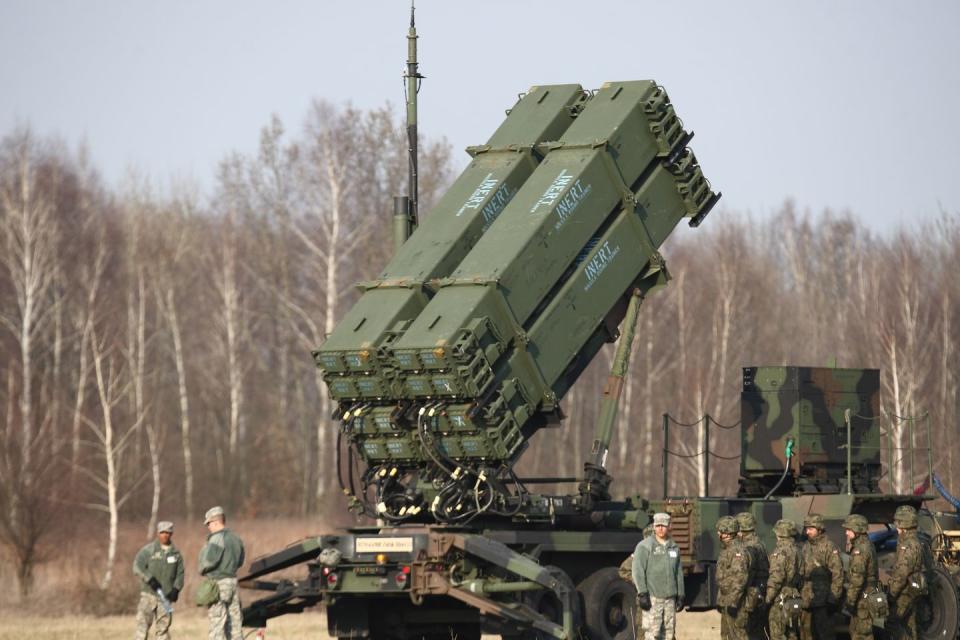The F-22 and F-35 Can Now Talk to Each Other, All Because of a U-2
The aging U-2 spy plane has picked up a new mission: acting as a communications bridge between the F-22 Raptor and F-35 Joint Strike Fighter.
The two fifth-generation fighters have different communications links, so until now, they couldn actually “talking” to one another.
The U-2’s role will eventually be taken over by high-flying drones.
One of the oldest airplanes in the U.S. Air Force has picked up a critical new mission: serve as a flying translator for two of the youngest planes.
Although the F-22 Raptor and F-35 Joint Strike Fighter are among the most advanced fighter jets in the world, they have two different communications systems, which means they can’t communicate with each other. That’s why they need a third plane—the U-2 “Dragon Lady” spy plane—to help facilitate the conversation.
✈ You love badass planes. So do we. Let’s nerd out over them together.
The F-22 and F-35 are each equipped with advanced datalinks that help them send and receive data to other planes. Both jets are designed to operate in a contested air environment, using stealth to remain undetected by adversaries, so they require secure links that won’t reveal a fighter’s position.

The Air Force developed the F-22 in the 1980s and 1990s, and worked on the F-35 in the early 2000s. The F-22 uses its own Intra-Flight Data Link (IFDL), while the F-35 uses the Multifunctional Advanced Data Link (MADL). The problem? IFDL can’t communicate with MADL, and vice versa. In a major war scenario, the two planes will frequently fly alongside each other, so this incompatibility is a big problem.
The Air Force has tried to fix the issue for years, and it’s finally developed a solution: use a U-2 spy plane to take IFDL and MADL signals from both fighters and pass them along not only to each other, but to stations on the ground, too. The technology could, for example, allow a F-22 that has run out of air-to-air missiles to share missile track data for an enemy cruise missile with a fully armed F-35, enabling the newer jet to make the intercept.
This is all part of the Pentagon’s master plan to allow as many ships, planes, and ground units to communicate and share sensor data with each other in wartime as possible. The U.S. military has the right tools to do practically any job during a war, but they might be spread among different aircraft, units, or even services. The challenge is to wire up all of the units in all of the services so they can communicate and understand what their different capabilities are.
For example, in a future conflict, an F-35 might detect an enemy ballistic missile launcher and decide it’s too heavily defended to attack. The Air Force could quickly pass along target data to an Army artillery battery within range of the launcher, whose high explosive shells would get through any defense. A Marine Corps unit defending an island might detect incoming enemy aircraft and request that Air Force fighters—in this example, F-22s—intercept the threat.

Last year, Air Force F-35As also used a U-2 to send sensor data to an Army artillery unit. Under this scenario, an F-35A could use its distributed aperture system, a 360-degree network of built-in infrared cameras, to detect a low-flying cruise missile that’s outside the detection range of an Army air defense unit.
The U-2 is especially good at being a flying translator because the Air Force designed it as a high-altitude, long-endurance spy plane. A translator node needs to fly high so it can relay signals between low-flying aircraft that might otherwise be beyond the curvature of the Earth.
A long-endurance flight time means the U-2 can fly from a secure base, make the trip to the front line, and loiter for as long as the battle rages below. The downside is the U-2 isn’t very stealthy, and its appearance over the battlefield will telegraph to the enemy that something big is about to happen.
Eventually, the U-2 will bow out of the translator role and cede its job to a cheaper, uncrewed, and stealthy drone that can linger even longer. The Air Force has already tested the technology on a XQ-58A Valkyrie drone. The service cautions, however, that if it can still figure out a way to cut out the middleman and make IFDL and MADL talk to each other using a fighter’s onboard software, it will.
🎥 Now Watch This:
You Might Also Like

